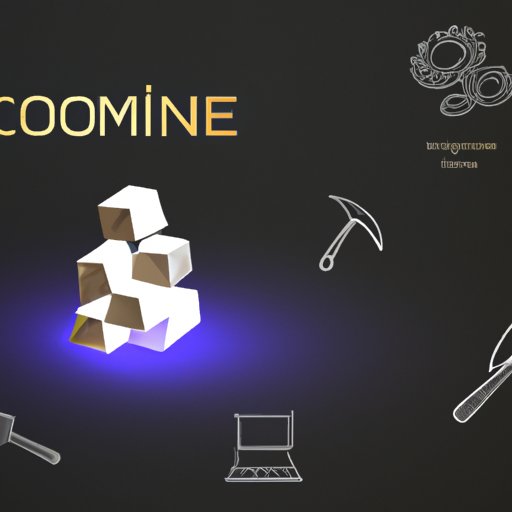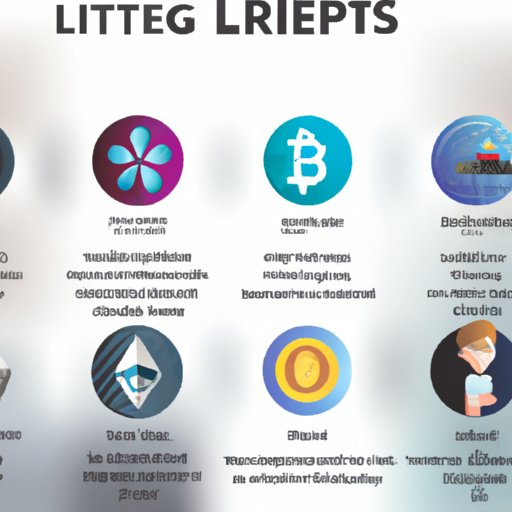Introduction
Cryptocurrency mining is the process of verifying and adding transaction records to a public ledger, known as the blockchain. Miners are rewarded with cryptocurrency for their efforts. As the popularity of cryptocurrency has grown, so too has the number of people interested in mining it. But with so many different cryptocurrencies available, it can be difficult to decide which one to mine.
This article is designed to help you make an informed decision about which cryptocurrency to mine. It provides a comprehensive guide to understanding the basics of cryptocurrency mining, what to consider when mining cryptocurrency, and how to evaluate the profitability of different cryptocurrencies.

A Guide to Choosing the Right Cryptocurrency to Mine
When deciding on a cryptocurrency to mine, there are several factors to consider. The most important ones are outlined below.
Identifying Your Goals
The first step in choosing a cryptocurrency to mine is to identify your goals. Are you looking to make a quick profit, or are you in it for the long haul? Do you want to mine a popular cryptocurrency, or do you prefer something more niche? Answering these questions will help you narrow down your options and focus on the cryptocurrencies that are most likely to meet your needs.
Evaluating Profitability
Once you have identified your goals, the next step is to evaluate the profitability of different cryptocurrencies. Different cryptocurrencies have different levels of difficulty and reward, so it’s important to research each one before investing. Be sure to consider the cost of equipment, electricity, and other associated costs when calculating profitability.
Analyzing Mining Difficulty
Mining difficulty is another key factor to consider when choosing a cryptocurrency to mine. The higher the difficulty level, the more computing power and electricity required to successfully mine the cryptocurrency. For this reason, it’s important to research the current difficulty level of each cryptocurrency before investing. This information can usually be found on the cryptocurrency’s website or online forums.

What to Consider When Mining Cryptocurrency
In addition to identifying your goals and analyzing mining difficulty, there are several other factors to consider when mining cryptocurrency. These include the cost of equipment, mining software, and types of mining.
Cost of Equipment
The cost of equipment is an important factor to consider when mining cryptocurrency. You’ll need to purchase specialized hardware, such as graphic cards, processors, and cooling systems, in order to mine effectively. Depending on the cryptocurrency you choose to mine, you may also need to invest in additional hardware and software.
Mining Software
Mining software is essential for mining cryptocurrency. This software helps miners calculate the hash rate, or the speed at which a computer is solving cryptographic problems. It also helps miners keep track of their rewards and monitor their mining rigs. Popular mining software includes Claymore, MultiMiner, and NiceHash.
Types of Mining
There are two main types of mining: solo mining and pool mining. Solo mining requires miners to set up their own mining rigs and hardware, while pool mining allows miners to join forces and share resources. Pool mining is usually more profitable than solo mining, as it reduces the risk of losses due to hardware failure and electricity costs.
Evaluating Profitability of Cryptocurrency Mining
Once you’ve identified your goals, evaluated profitability, and chosen the right equipment, it’s time to evaluate the profitability of cryptocurrency mining. This can be done by calculating the return on investment (ROI) and assessing the risk factors associated with mining.
Calculating Return on Investment
Return on investment (ROI) is a measure of the profitability of an investment. To calculate ROI, divide the net profits from an investment by the total amount invested. For example, if you invested $1,000 in mining equipment and earned $200 in profits, your ROI would be 20%.
Evaluating Risk Factors
It’s also important to assess the risk factors associated with mining cryptocurrency. These include market volatility, hardware failure, and electricity costs. By understanding these risks, you can better prepare yourself for any potential losses.

Pros and Cons of Different Cryptocurrencies for Mining
Different cryptocurrencies have different advantages and disadvantages when it comes to mining. Here’s a brief overview of the pros and cons of some of the most popular cryptocurrencies for mining.
Bitcoin
Pros: Bitcoin is the most popular cryptocurrency and is well established, meaning it’s relatively easy to get started with. It also offers high rewards and low transaction fees.
Cons: Bitcoin mining is highly competitive and requires a lot of expensive hardware. It also has a high difficulty level, meaning it can be difficult to mine.
Ethereum
Pros: Ethereum is the second largest cryptocurrency and is gaining popularity among miners. It has a low difficulty level, making it easier to mine than Bitcoin. It also offers high rewards and low transaction fees.
Cons: Ethereum has a high learning curve and requires specialized hardware. It’s also vulnerable to 51% attacks, meaning it can be prone to double spending.
Litecoin
Pros: Litecoin is a popular alternative to Bitcoin and has a much lower difficulty level. It also offers faster transactions and lower transaction fees.
Cons: Litecoin is not as widely accepted as Bitcoin and has a smaller market cap. It also offers lower rewards than Bitcoin.
Ripple
Pros: Ripple is a fast and secure payment system that is becoming increasingly popular among miners. It also has a low transaction fee and is less energy intensive than other cryptocurrencies.
Cons: Ripple is not a decentralized cryptocurrency, meaning it is not as secure as other cryptocurrencies. It also has a low reward rate and is only supported by a handful of exchanges.
An Overview of Popular Cryptocurrencies for Mining
As mentioned above, there are several popular cryptocurrencies for mining. Here’s a brief overview of each one.
Bitcoin
Bitcoin is the most popular cryptocurrency and is well established. It requires expensive hardware and has a high difficulty level, but offers high rewards and low transaction fees.
Ethereum
Ethereum is the second largest cryptocurrency and is gaining popularity among miners. It has a low difficulty level, making it easier to mine than Bitcoin. It also offers high rewards and low transaction fees.
Litecoin
Litecoin is a popular alternative to Bitcoin and has a much lower difficulty level. It also offers faster transactions and lower transaction fees.
Monero
Monero is a privacy-focused cryptocurrency that is becoming increasingly popular among miners. It uses advanced cryptographic techniques to ensure transactions remain private and secure.
Dash
Dash is a digital currency with a focus on privacy and speed. It offers low transaction fees and fast transaction times, making it attractive to miners.
Zcash
Zcash is a privacy-focused cryptocurrency that offers shielded transactions. It has a high difficulty level and requires expensive hardware to mine, but offers high rewards.
Conclusion
Mining cryptocurrency can be a lucrative endeavor, but it’s important to understand the basics before investing. This article provided a comprehensive guide to cryptocurrency mining, covering topics such as identifying goals, evaluating profitability and analyzing mining difficulty. It also examined the pros and cons of different cryptocurrencies for mining, including Bitcoin, Ethereum, Litecoin, and Ripple.
By following the advice in this article, you can make an informed decision about which cryptocurrency to mine. With the right knowledge and preparation, you can maximize your chances of success and reap the rewards of cryptocurrency mining.
(Note: Is this article not meeting your expectations? Do you have knowledge or insights to share? Unlock new opportunities and expand your reach by joining our authors team. Click Registration to join us and share your expertise with our readers.)
